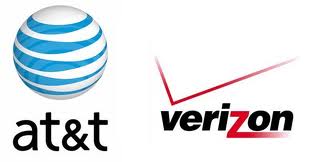 Although continued traffic growth would seem to indicate companies like AT&T and Verizon will need to continue major spending initiatives to keep up with demand, technological advancements and upgrade programs have made networks more efficient than ever, allowing AT&T and Verizon to report cost declines as much as 40% annually.
Although continued traffic growth would seem to indicate companies like AT&T and Verizon will need to continue major spending initiatives to keep up with demand, technological advancements and upgrade programs have made networks more efficient than ever, allowing AT&T and Verizon to report cost declines as much as 40% annually.
Wireless One’s Dave Burstein spoke with Andre Fuetsch, AT&T’s chief technology officer about current telco cost trends. Feutsch said a lot has changed with AT&T’s networks over the last several years.
“We’ve gone from 10 gigabits to 100 gigabits to now 400 gigabits on our fiber,” Feutsch told Burstein. “MIMO and massive MIMO are extremely productive. Yes, I think 40% per year is a reasonable estimate of how our costs are going down. AT&T’s leadership in open white box and SDN will continue to drive that number higher, which is needed as network demand increases.”
Burstein notes Verizon similarly estimated their costs were also falling about 40% annually.
“I have been able to confirm that the 40% Verizon efficiency savings figure is on target if not exact,” Burstein said. “You can replicate my thinking. Traffic has been growing 40% per year. Sales have been roughly flat for the similar time period. If productivity growth hadn’t been a similar 40%, profits likely would have trended down. In fact, they have been flat or slightly increasing.”
While AT&T has been embarked on a costly major fiber network buildout in its local phone service territory, Verizon has been focused on rebuilding and modernizing its core network. The “One Verizon” project is retiring a large percentage of the 200,000 legacy routers, switches, and other hardware in use across Verizon’s network and installing about 20,000 very efficient network box replacements. Verizon estimates its first year cost savings are about 50%.
Although network traffic growth, expansion, and upgrades come at a cost to carriers, technological improvements are covering much of those costs by making networks more efficient and capable of carrying much more data than ever before. When companies talk about their network investments in terms of justifying rate increases, that clearly does not tell the full story.


 Subscribe
Subscribe
Clickbait – That’s specific to wireless and their core networks but you neglect that and imply their costs are dropping 40% across the board – false.
Further the story you link to has absolutely no sources for that quote as to when, where it was made and in what context but it is a wireless blog.
If you click the bold part of the story, you will be linked to Dave Burstein’s article. He is the original source, as noted, and he spoke individually with the individual quoted. Dave Burstein is a widely recognized and authoritative source on broadband and telecommunications issues. The article is not entirely limited to wireless, nor does it say “across the board.” It says exactly what it says. You can obviously decide for yourself whether to accept it, but your claims it is “false” come with nothing beyond your claim.